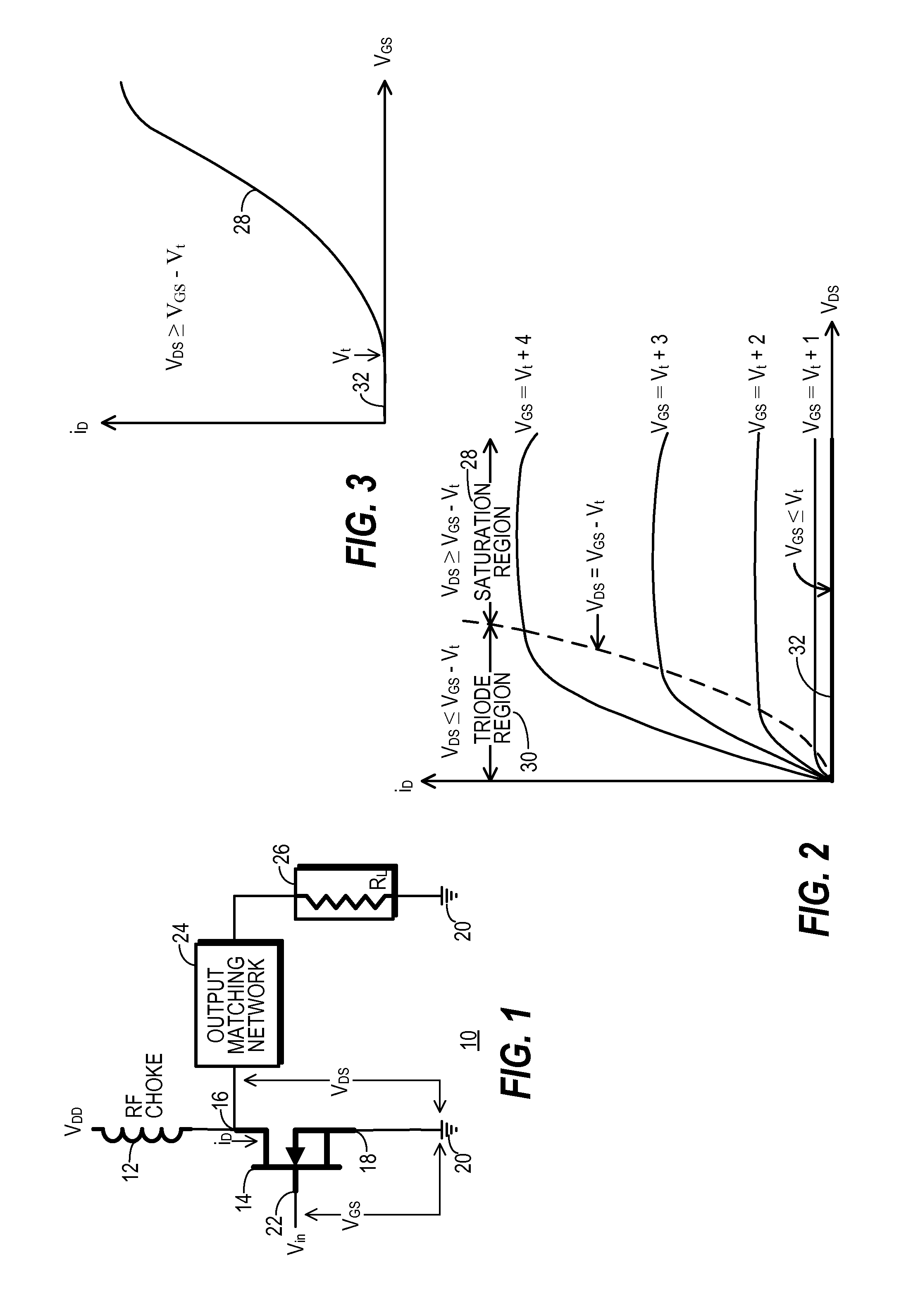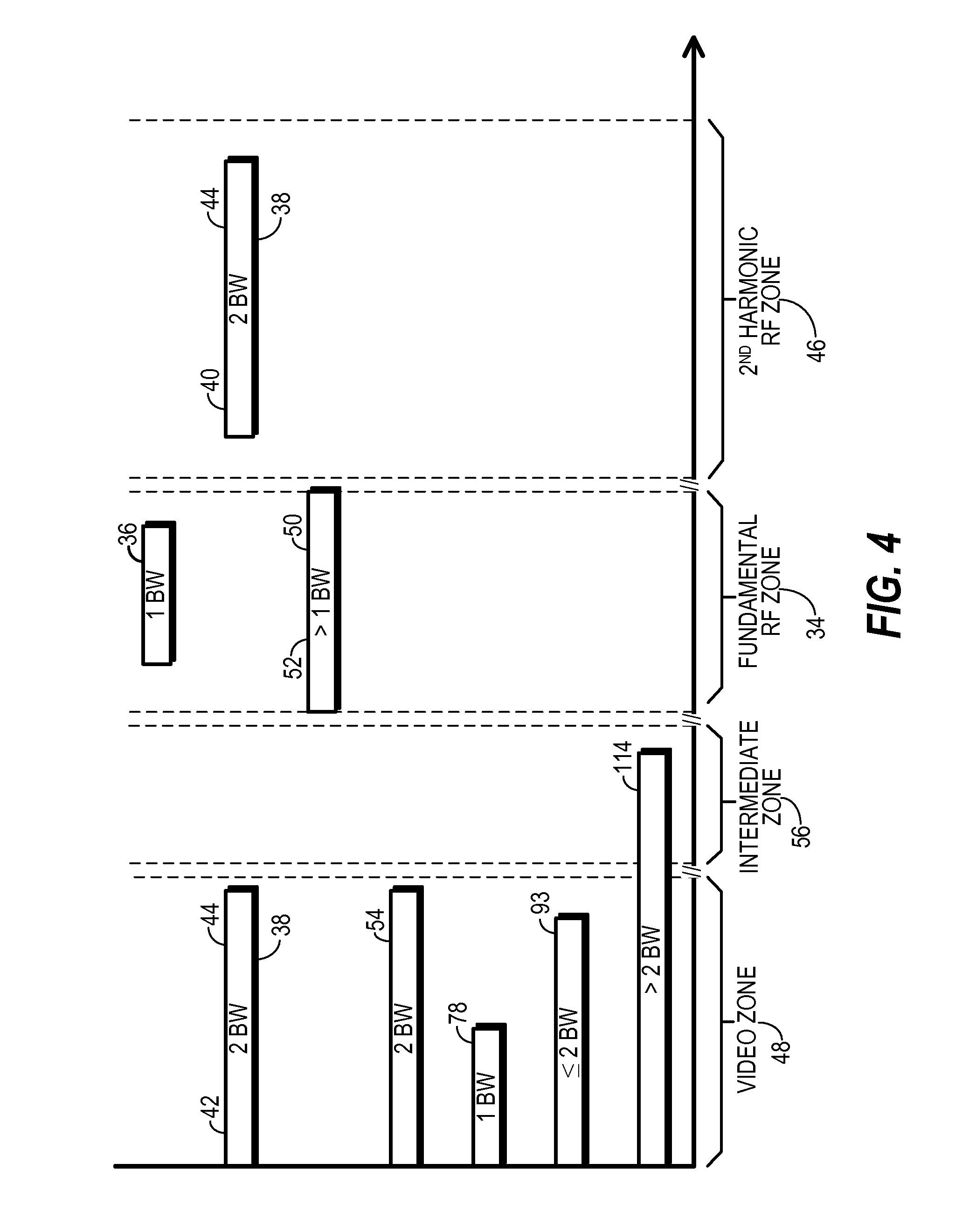Transmitter and method for RF power amplifier having a bandwidth controlled, detroughed envelope tracking signal
a technology of rf power amplifier and envelope tracking signal, which is applied in the field of rf communication systems, can solve the problems of rf transmitters in violation of their regulatory spectral masks, linear rf power amplifiers invariably failing to meet, and nonlinearities,
- Summary
- Abstract
- Description
- Claims
- Application Information
AI Technical Summary
Benefits of technology
Problems solved by technology
Method used
Image
Examples
Embodiment Construction
[0028]FIG. 1 shows a simplified block diagram of a generic form of an RF power amplifier 10. A biasing signal VDD is applied through an RF choke inductor 12 to an output of a core amplifying device 14, represented in FIG. 1 using a field effect transistor (FET) symbol. The biasing signal is shown as being applied to a drain 16 of device 14. Those skilled in the art will appreciate that a wide variety of FET amplifying devices, including MOS, CMOS, LDMOS, and the like may be used as amplifying device 14 and that other types of transistor and tube forms of amplifying devices 14 may also be used. Moreover, while FIG. 1 shows only a single amplifying device 14 for simplicity, RF power amplifier 10 may use multiple active devices coupled together to serve in the role of amplifying device 14. Examples of such multiple-device structures include a push-pull configuration commonly used for class AB operation and a stack commonly used with CMOS amplifying devices.
[0029]A source 18 of amplifyi...
PUM
 Login to View More
Login to View More Abstract
Description
Claims
Application Information
 Login to View More
Login to View More - R&D
- Intellectual Property
- Life Sciences
- Materials
- Tech Scout
- Unparalleled Data Quality
- Higher Quality Content
- 60% Fewer Hallucinations
Browse by: Latest US Patents, China's latest patents, Technical Efficacy Thesaurus, Application Domain, Technology Topic, Popular Technical Reports.
© 2025 PatSnap. All rights reserved.Legal|Privacy policy|Modern Slavery Act Transparency Statement|Sitemap|About US| Contact US: help@patsnap.com



